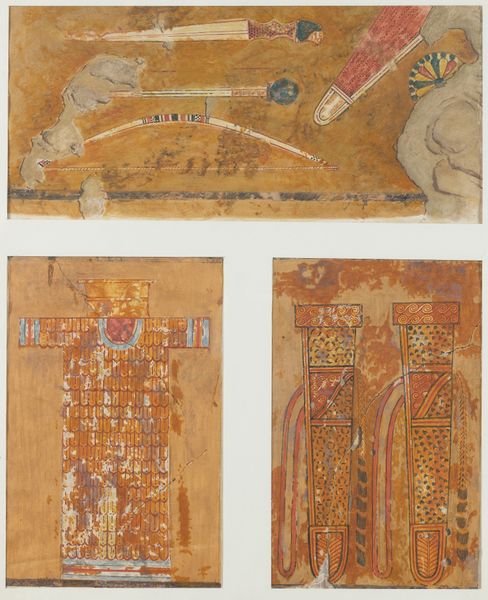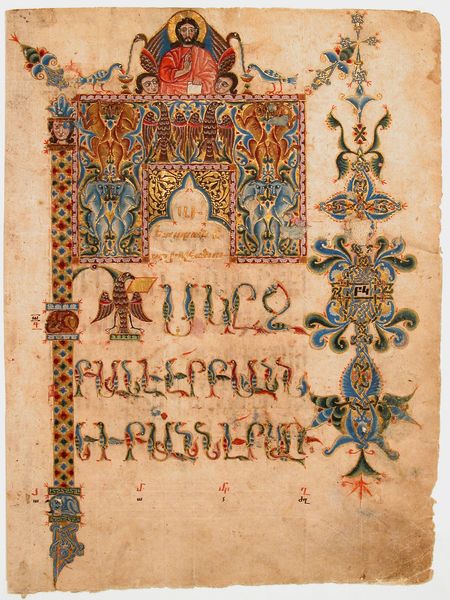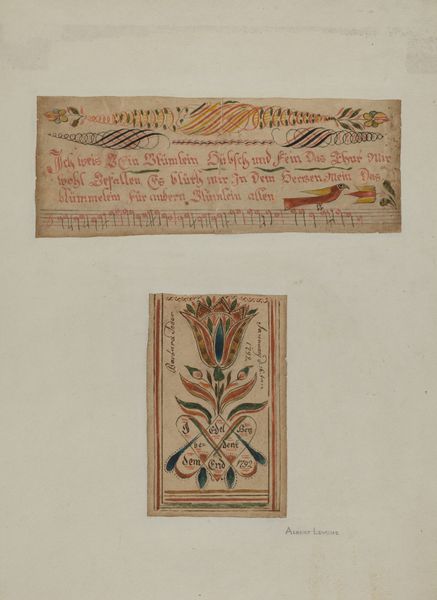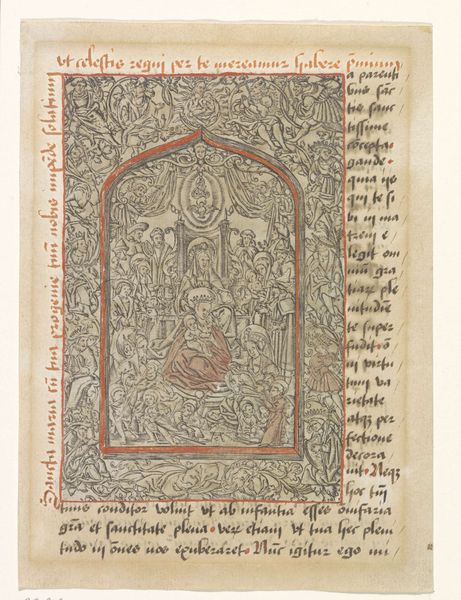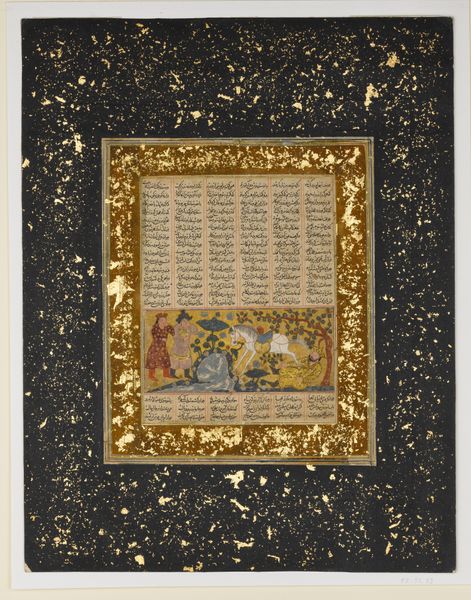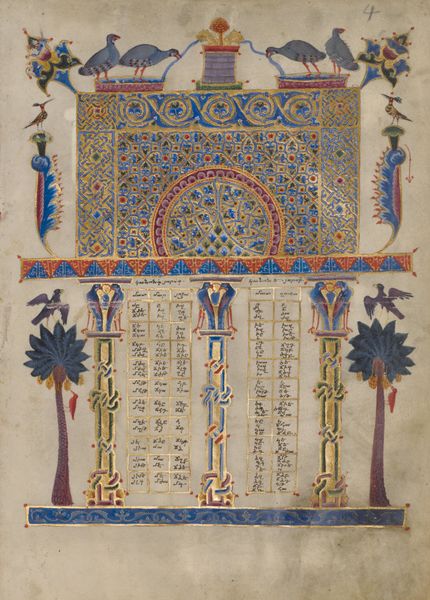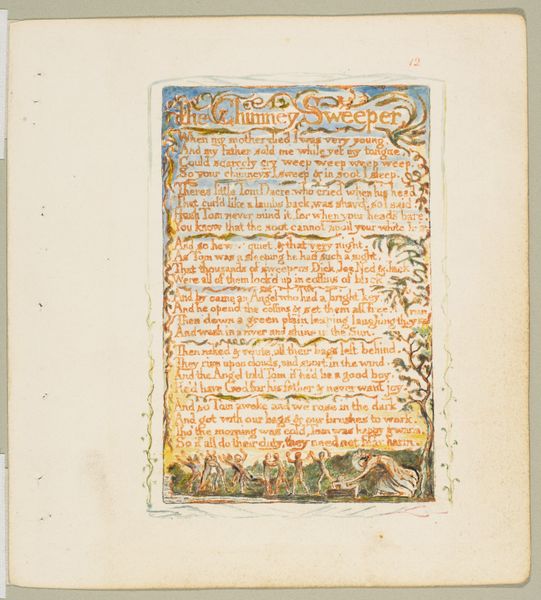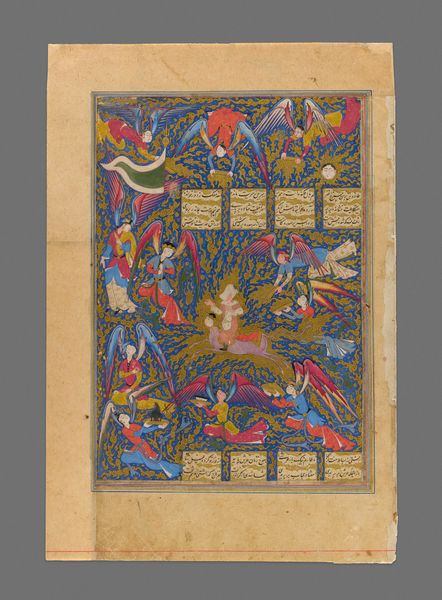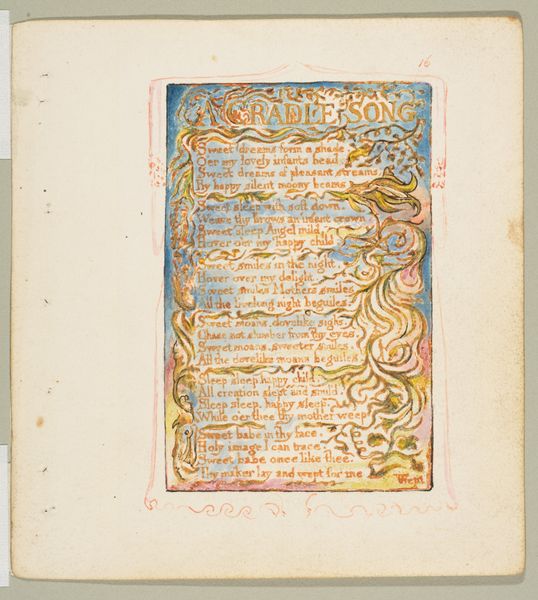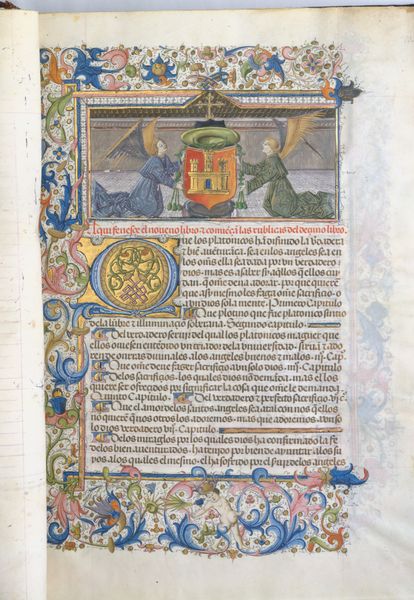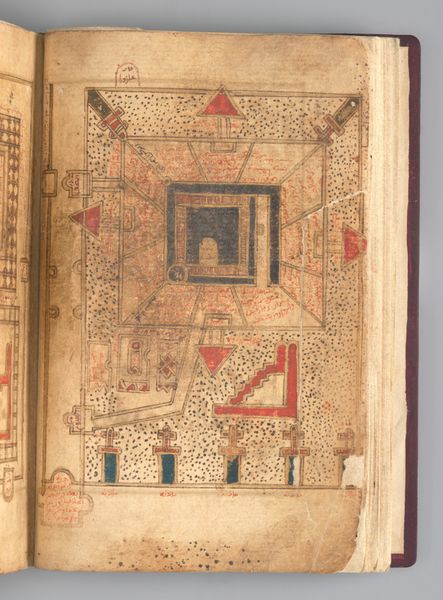
painting, watercolor
#
water colours
#
narrative-art
#
painting
#
asian-art
#
figuration
#
watercolor
#
geometric
#
watercolour illustration
#
miniature
#
watercolor
Dimensions: 4 3/8 x 10 3/8 in. (11.11 x 26.35 cm)
Copyright: Public Domain
Curator: Let's discuss this interesting piece; it's an "Adoration of a Tirthankara" that was made around 1500. The artwork now resides here at the Minneapolis Institute of Art, rendered in watercolour. What's your first take? Editor: A sense of quiet devotion just radiates from this. The soft watercolor palette lends itself beautifully to the serene expressions on the figures' faces. I am also struck by its intimate scale and complexity – as if peering into someone's secret prayer. Curator: Exactly. We see a layered process. The paper itself signals deliberate selection, providing a smooth surface optimized for retaining those fine watercolor details, almost against the texture of the pigment itself. Editor: Yes, and how deliberate that placement must have been, those blocks of colour so neatly confined beside the intricate text, the script a decorative complement to the art. Curator: Right. The very act of creating these illustrated manuscripts speaks to a society valuing not only religious doctrine but also the artisanal skills required to produce these texts. One might assume its destination was a private commission of a wealthy Jain patron. Editor: And think of the story each page whispers - the artisan meticulously grinding pigments, painstakingly applying each brushstroke in reverence of his craft and belief. Curator: Consider how portable these manuscripts were; disseminating both spiritual knowledge and artistic style throughout different regions, allowing for cultural exchanges around iconography. Editor: The repetition of form, the figures echo and harmonize with each other…almost like a chant finding its visual expression. The geometric patterns give this reverence to more formal artistic rules than expression and freedom of style, don't you agree? Curator: Absolutely. Understanding the production means we get to better see the larger social context. The piece reminds me that artistry and belief were integral aspects of material and manuscript culture back then. Editor: For me, diving into it revealed new layers to its story, going beyond aesthetics alone to unearth echoes of faith, labour, and shared humanity that speaks silently.
Comments
minneapolisinstituteofart almost 2 years ago
⋮
These typical western Indian Jain manuscripts both illustrate scenes from the Kalpasutra. In the top example, the Jina Mahavira, founder of Jainism, is seated on a throne, giving his possessions to an old man. This represents Mahavira's renunciation of title, position, vanity, and wealth in preparation for his life as an ascetic and teacher. The bottom page illustrates the adoration of a tirthankara, one of the twenty-four Jain saints, including Mahavira, whose righteous existence and fine example allowed them to escape the cycle of reincarnation.
Join the conversation
Join millions of artists and users on Artera today and experience the ultimate creative platform.
